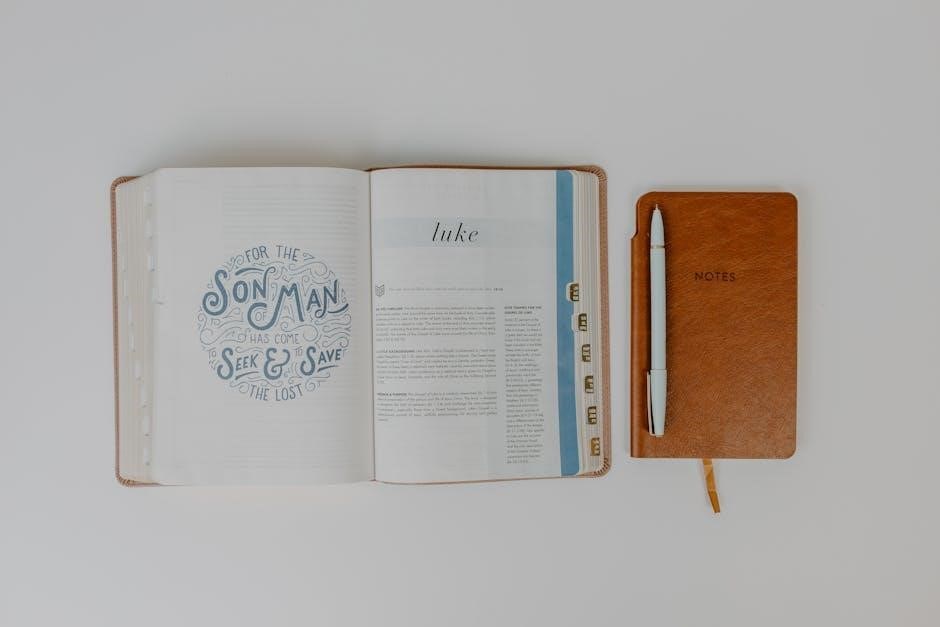The I-751 sample affidavit of friends letter is a crucial document supporting the petition to remove conditions on residency. It provides a sworn statement from friends or family, detailing their knowledge of the marriage’s legitimacy and the couple’s relationship. This letter serves as evidence of the bona fide nature of the marriage, helping to establish credibility in the petition process. It is typically written in a formal tone, including personal information, relationship history, and specific examples to validate the marriage’s authenticity. The affidavit must be notarized and submitted alongside other supporting documents to strengthen the case. It is essential to ensure accuracy and detail to avoid delays or complications in the I-751 process.
Overview of the I-751 Petition
The I-751 petition is a critical legal document filed by conditional residents to remove the conditions on their green card, transitioning to permanent residency. It is typically submitted within 90 days of the conditional residency period expiring, usually 2 years after obtaining the initial status. The petition requires substantial evidence to prove the marriage’s legitimacy and continuity, ensuring it was not entered into solely for immigration benefits. Couples must demonstrate ongoing cohabitation, shared financial responsibilities, and a genuine relationship. The I-751 affidavit of friends letter serves as supplementary evidence, providing third-party validation of the marriage’s authenticity. Failure to file the petition correctly or provide sufficient documentation can result in denial or removal proceedings. This process underscores the importance of thorough preparation and compliance with USCIS requirements.
Importance of the Affidavit of Friends in the I-751 Process
The affidavit of friends plays a pivotal role in the I-751 process by providing third-party validation of the marriage’s legitimacy. It offers an objective perspective, reinforcing the credibility of the petition. Friends or family members can attest to the couple’s relationship history, cohabitation, and shared experiences, which helps establish the bona fide nature of the marriage. This document is particularly valuable when primary evidence, such as joint financial records, is limited. By including specific examples and personal observations, the affidavit strengthens the petition and demonstrates the couple’s commitment to a genuine marital relationship. While not mandatory, it significantly enhances the likelihood of a successful outcome by addressing potential concerns or gaps in documentation.

Structure of the I-751 Affidavit Letter
The I-751 affidavit letter typically includes personal information, relationship history, marriage details, statements confirming the marriage’s legitimacy, and a conclusion with a signature, ensuring a comprehensive and credible submission.
Personal Information and Contact Details
The affidavit begins with the friend’s full name, complete address, phone number, and email. This section establishes the affiant’s identity and credibility. It is essential to provide accurate and up-to-date contact information to ensure the document’s legitimacy. The friend must state their relationship to the applicant, such as “friend” or “family member,” and confirm how long they have known the couple. Including this information helps establish the affiant’s familiarity with the marriage and their ability to attest to its genuineness. The personal details section sets the foundation for the rest of the affidavit, demonstrating the affiant’s reliability as a witness to the marriage’s bona fide nature.
Relationship History with the Applicant
This section details how the affiant met the applicant and the duration of their relationship. It is crucial to describe the nature of their friendship, such as shared activities, frequent interactions, or mutual interests. The affiant should explain how they have witnessed the applicant’s marriage, including when they first met the spouse and how they have observed the relationship evolve. Specific examples, like attending events together or witnessing daily interactions, add credibility. The affiant should also mention their belief in the marriage’s genuineness, based on their observations of the couple’s behavior and commitment to each other. This section helps establish the affiant’s familiarity with the applicant and their marriage, reinforcing the petition’s credibility.
Details About the Marriage and Spouse
This section provides specific information about the applicant’s spouse and the marriage. The affiant should describe how they met the spouse, their relationship dynamics, and interactions with the couple. It is important to include details about the spouse’s character, shared responsibilities, and how they support each other. The affiant may mention joint activities, such as vacations, family gatherings, or daily routines, to illustrate the couple’s commitment. Specific examples, like helping with household chores or attending important events together, demonstrate the marriage’s legitimacy. The affiant should also state their belief in the marriage’s genuineness, based on their observations of the couple’s behavior and mutual respect. This section helps establish the spouse’s role in the relationship and the marriage’s authenticity, supporting the I-751 petition’s credibility.
Statements Confirming the Bona Fide Nature of the Marriage
This section is dedicated to affirming the genuine nature of the marriage. The affiant should clearly state their belief that the marriage is legitimate and not entered into for immigration purposes. They may describe specific interactions or observations that demonstrate the couple’s commitment to each other, such as shared responsibilities, mutual respect, and emotional support. The affiant should also mention any joint activities, like purchasing a home, raising children, or making long-term plans together, which further validate the marriage’s authenticity. It is important to emphasize the couple’s public displays of affection and their integration into each other’s lives. These statements help establish credibility and reinforce the petition by providing an outsider’s perspective on the marriage’s legitimacy. The affiant’s testimony plays a critical role in confirming the bona fide nature of the relationship.
Conclusion and Signature
The conclusion of the affidavit reaffirms the affiant’s belief in the legitimacy of the marriage and their commitment to providing truthful testimony. This section typically includes a statement such as, “I swear or affirm that the information provided in this affidavit is true and correct to the best of my knowledge.” The affiant must then sign and date the document in the presence of a notary public, who will also add their official stamp or seal. The signature section is a critical legal requirement, as it validates the affidavit and confirms the affiant’s accountability for the statements made. Proper notarization ensures the document’s authenticity and admissibility in the I-751 petition process. The affiant’s full name, address, and contact information are also included for reference. This final step completes the affidavit, making it a legally binding declaration.

Legal Requirements for the I-751 Affidavit
The I-751 affidavit must be notarized, include the affiant’s personal information, and be written in a formal tone. It must avoid legal errors to prevent delays.
Who Can Write the Affidavit
The affidavit for the I-751 petition can be written by a credible third party, such as a close friend, family member, or colleague, who has personal knowledge of the marriage. The individual must be a U.S. citizen or lawful permanent resident and should have known the couple for at least two years. They must provide detailed information about their relationship with the applicants and their firsthand observations of the marriage. The affiant must also be willing to testify if required. It is important that the person writing the affidavit has no financial or legal conflicts of interest with the petitioners. Their credibility and honesty are crucial to the validity of the affidavit. The affiant’s statement should be based on personal experiences and observations, ensuring the document’s authenticity and reliability.
Language and Formatting Guidelines
The affidavit must be written in clear, formal English, avoiding slang or jargon. It should be typed on plain white paper with proper formatting, including headings, paragraphs, and a logical structure. The language must be concise and factual, focusing on relevant details about the marriage and relationship. Grammar and spelling should be correct to maintain professionalism. The affidavit should not include unnecessary personal opinions or speculative statements. Proper formatting includes using a standard font, consistent margins, and clear section headings. The document should be free of errors and inconsistencies to ensure credibility. It is essential to follow these guidelines to present a professional and credible affidavit that supports the I-751 petition effectively.
Notarization and Authentication
The affidavit must be notarized to authenticate the signer’s identity and confirm the voluntary nature of the statement. A licensed notary public must witness the signing, verify the signer’s identity through valid government-issued ID, and affix their official seal or stamp. The notarization process ensures the document’s legitimacy and admissibility in legal proceedings. Proper authentication is critical to avoid delays or rejection of the I-751 petition. The notary’s signature, date, and seal must be clearly visible. Failure to properly notarize the affidavit can result in its inadmissibility. It is essential to follow state-specific notarization requirements and ensure the document meets all legal standards. This step is a critical part of the affidavit’s validity and the overall petition process.
Common Legal Mistakes to Avoid
When preparing the affidavit, several legal mistakes must be avoided to ensure its validity and effectiveness. One common error is providing insufficient or vague details about the relationship, which can raise doubts about the marriage’s authenticity. Another mistake is failing to include specific examples or anecdotes that demonstrate the couple’s interactions and shared life. Additionally, omitting the notarization process or failing to meet state-specific notary requirements can render the affidavit invalid. It is also crucial to avoid inaccuracies in personal information, such as incorrect names, addresses, or dates, as this can lead to delays or rejection. Lastly, using informal language or deviating from the required format can undermine the document’s professionalism and credibility. Ensuring precision, completeness, and adherence to legal standards is essential to avoid complications in the I-751 process.
Sample Content for the I-751 Affidavit
The sample affidavit includes sections for personal information, relationship history, marriage details, and statements confirming the marriage’s legitimacy. It provides a template with placeholders for customization, ensuring clarity and professionalism while adhering to legal requirements. The document is structured to guide the affiant through each necessary detail, from initial acquaintance to ongoing interactions, and concludes with a formal declaration and notarized signature. This sample serves as a practical reference for drafting a compelling and compliant affidavit in support of the I-751 petition.
The sample introduction section begins with the affiant’s personal details, including their full name, address, and contact information. It also states their relationship to the applicant and spouse, explaining how they know the couple. This section is typically formal, with the affiant swearing under penalty of perjury that their statements are true. The introduction sets the tone for the affidavit, establishing the affiant’s credibility and familiarity with the marriage. It may include a statement like, “I have known [Applicant’s Name] and [Spouse’s Name] since [date] and can attest to the genuine nature of their relationship.” This section is crucial for establishing the affiant’s qualifications to provide testimony. Placeholders are often included for customization, ensuring the affidavit aligns with the specific circumstances of the case.
Sample Relationship History and Marriage Details
In the relationship history section, the affiant describes how they met the applicant and spouse, detailing the duration of their acquaintance. They may mention specific events or gatherings where they observed the couple together, such as holidays, weddings, or family dinners. The affidavit typically includes the date and location of the marriage, as well as the affiant’s attendance if applicable. It also highlights the couple’s interactions, such as shared hobbies, vacations, or daily activities, to illustrate their bond. The affiant may note how the couple supports each other emotionally and financially, demonstrating their commitment. This section provides a narrative of the relationship’s evolution, showcasing its authenticity and depth. Specific examples, like joint decisions or shared responsibilities, further validate the marriage’s legitimacy.
Sample Statements About the Bona Fide Marriage
In this section, the affiant attests to the genuine nature of the marriage, emphasizing the couple’s mutual respect, trust, and commitment. They may state that the relationship is not for immigration purposes but based on a deep emotional connection. Specific examples, such as joint financial decisions, shared household responsibilities, or mutual support during challenges, are often included to demonstrate the marriage’s legitimacy. The affiant may also mention the couple’s long-term goals, such as purchasing a home, starting a family, or planning a future together. These statements highlight the couple’s integration into each other’s lives and their intention to maintain a lifelong partnership. The affiant’s observations and beliefs about the marriage’s authenticity are clearly articulated to support the petition.

Sample Conclusion and Signature Section
The conclusion reaffirms the affiant’s belief in the marriage’s genuineness and their commitment to providing truthful information. It typically ends with a statement like, “I swear or affirm that the information provided is true and correct to the best of my knowledge.” The signature section requires the affiant’s full name, signature, and date. Including contact information, such as a phone number and address, adds credibility. The affiant must sign the document in the presence of a notary public, who then stamps or seals the affidavit. This section ensures the letter is legally binding and authentic, completing the affidavit’s formal requirements. Proper execution is essential for the document to be accepted as valid evidence in the I-751 petition process.
Tips for Writing an Effective I-751 Affidavit
Be clear, honest, and detailed. Provide specific examples to validate the marriage. Avoid legal jargon and ensure the tone is sincere. Notarize the document to authenticate it. Proofread for errors and inconsistencies to maintain credibility. Ensure all statements align with the couple’s relationship timeline and circumstances. Focus on highlighting the bona fide nature of the marriage through personal observations and experiences. Avoid including irrelevant information to keep the affidavit concise and impactful. Seek legal advice if unsure about any aspect of the process to ensure compliance with USCIS requirements.
Guidelines for Tone and Language
The tone of the I-751 affidavit should be sincere, clear, and formal. Avoid using overly emotional or casual language, as the document must maintain professionalism. Use simple, straightforward language to ensure clarity and avoid misunderstandings. Legal jargon should be avoided unless necessary, and the focus should remain on providing factual, personal observations. The affidavit must be truthful and avoid exaggerations or speculative statements. It is essential to maintain a neutral and objective tone, sticking strictly to the facts. Personal experiences and specific examples are encouraged to validate the marriage’s legitimacy. Ensure the language is concise and free of errors, as this reflects credibility. The affidavit should also be written in the first person, as it is a personal statement from the affiant. Notarization ensures the document’s authenticity, further reinforcing its credibility.
How to Avoid Errors and Inconsistencies
To ensure the I-751 affidavit is error-free and consistent, carefully review the document for factual accuracy and proper formatting. Avoid inconsistencies in dates, names, and details about the relationship or marriage. Use a clear and logical structure, ensuring each statement aligns with the previous one. Double-check personal information, such as names, addresses, and contact details, to prevent discrepancies. Avoid using legal jargon or ambiguous language that could confuse the reader. It is also important to ensure the affidavit is signed and notarized correctly. Having a trusted individual review the document for clarity and accuracy can help identify potential errors. Providing specific examples and avoiding vague statements will strengthen the affidavit’s credibility. Any inconsistencies or errors could lead to delays or complications in the petition process, so attention to detail is crucial.
Importance of Including Specific Examples

Including specific examples in the I-751 affidavit is essential to demonstrate the authenticity of the marriage and the depth of the relationship. Vague statements may appear insufficient or unconvincing, while detailed examples provide concrete evidence of the couple’s interactions and shared life. For instance, describing joint activities, conversations, or observations of the couple’s behavior can help establish credibility. Specific examples also highlight the witness’s firsthand knowledge of the relationship, making the affidavit more persuasive. Avoid general statements and instead focus on particular events or patterns that illustrate the couple’s commitment to one another. This approach strengthens the petition by providing tangible proof of the marriage’s bona fide nature, which is critical for a successful I-751 submission.

Additional Evidence to Support the I-751 Petition
Photographs, correspondence, and joint financial documents are crucial. Including proof of shared responsibilities, such as bills or leases, strengthens the case. Submitting evidence like travel itineraries or witness statements also helps validate the marriage’s authenticity and demonstrates a shared life together.
Photographs and Correspondence
Photographs and correspondence are essential evidence to support the I-751 petition. Include wedding photos, vacation pictures, and images of daily life together to demonstrate a shared life. Correspondence, such as emails, letters, or text messages, should show ongoing communication and a genuine relationship. Organize these documents chronologically to highlight the progression of the marriage. Ensure photographs are clear and dated, while correspondence includes context about the discussions. These items help establish the couple’s bond and commitment, providing tangible proof of a bona fide marriage. Submitting a variety of visual and written evidence strengthens the petition and demonstrates the couple’s shared experiences and connection over time.
Joint Financial Documents and Accounts
Joint financial documents and accounts are critical evidence in supporting the I-751 petition, as they demonstrate the couple’s shared financial responsibilities and commitment to a life together. Examples include joint bank statements, credit card accounts, loans, tax returns, and property deeds. These documents show financial interdependence and a mutual commitment to managing household expenses. They also highlight the couple’s joint ownership of assets and liabilities, which is a key indicator of a bona fide marriage. It is important to submit recent and comprehensive records to illustrate the ongoing nature of the financial partnership. Including these documents strengthens the petition by providing tangible proof of the couple’s shared financial life and long-term planning together.
Other Supporting Documents
Beyond joint financial records and affidavits, other supporting documents play a vital role in strengthening the I-751 petition. These may include utility bills, rental agreements, insurance policies, and vehicle registrations in both spouses’ names, demonstrating shared responsibilities. Photographs of the couple together, with family and friends, and during significant events can also be submitted to illustrate the progression of the relationship. Correspondence, such as emails, text messages, and letters, provides further evidence of ongoing communication and commitment. Additionally, documents like airplane tickets, hotel receipts, and itineraries from trips taken together can highlight the couple’s shared experiences. These diverse documents collectively paint a comprehensive picture of the marriage’s legitimacy and the couple’s intertwined lives, helping to establish credibility in the petition process.
Common Mistakes in the I-751 Affidavit

Common mistakes include inaccuracies in personal information, insufficient detail about the relationship, and failure to notarize the document. These errors can delay or complicate the petition process.
Inaccuracies in Personal Information
Inaccuracies in personal information are a common mistake in the I-751 affidavit. These errors can include typos in names, incorrect addresses, or mismatched dates of birth. Such oversights may lead to delays or complications in the petition process, as USCIS relies on this information to verify the credibility of the affidavit. It is crucial to ensure all personal details, such as the full legal names of both the affiant and the petitioners, are accurate and consistent with official documents. Double-checking this information before submission is essential to avoid potential issues. Additionally, using a sample affidavit as a guide can help prevent errors and ensure compliance with legal requirements. Attention to detail is vital to maintain the integrity of the affidavit and support the petition effectively.
Insufficient Detail About the Relationship
Insufficient detail about the relationship is a frequent issue in I-751 affidavits, which can weaken the petition’s credibility. The affiant must provide specific examples and anecdotes that demonstrate their firsthand knowledge of the couple’s relationship. Vague statements, such as “they seem happy,” lack the depth needed to prove the marriage’s legitimacy. Omitting key details, like how the couple met, shared experiences, or ongoing interactions, can raise concerns with USCIS. It is essential to include concrete examples, such as attending events together, frequent communication, or shared responsibilities, to illustrate the couple’s bond. Without sufficient detail, the affidavit may appear unconvincing, potentially leading to requests for additional evidence or delays in processing. Providing a thorough and specific relationship history is critical to supporting the petition effectively.
Submission Process for the I-751 Affidavit
The I-751 affidavit must be submitted alongside Form I-751, typically within 90 days of filing. Ensure the document is notarized and included in the petition package to avoid delays.
When to Submit the Affidavit

The affidavit of friends letter should be submitted at the time of filing Form I-751, Petition to Remove Conditions on Residence. It is essential to include this document in the initial petition package to avoid delays. The affidavit must be submitted within the 90-day window before the conditional green card expires. Missing this deadline can result in complications or denial of the petition. Ensure the affidavit is properly notarized and included with all other supporting evidence. Timely submission is crucial to demonstrate the bona fide nature of the marriage and comply with USCIS requirements. Including it in the initial filing helps avoid the need for additional evidence requests later.
How to Properly File the Document
To properly file the I-751 affidavit, ensure it is submitted alongside Form I-751, Petition to Remove Conditions on Residence. Make a copy of the affidavit for your records before filing. Submit the original notarized document to USCIS at the address listed in the form instructions. Use a trackable delivery method, such as certified mail, to confirm receipt. Include the affidavit in a sealed envelope with all other supporting documents. Failure to file the affidavit with the petition may result in delays or denial. Ensure the document is completed accurately and signed in the presence of a notary public. Proper filing is critical to avoid complications in the removal of conditions process. Always verify the filing address and requirements before submitting.

Conclusion
The I-751 sample affidavit of friends letter is a vital tool in supporting a petition to remove conditions on residency. It provides a sworn statement from friends or family, detailing their knowledge of the marriage’s legitimacy and the couple’s relationship. This letter serves as evidence of the bona fide nature of the marriage, helping to establish credibility in the petition process. It is typically written in a formal tone, including personal information, relationship history, and specific examples to validate the marriage’s authenticity. The affidavit must be notarized and submitted alongside other supporting documents to strengthen the case. It is essential to ensure accuracy and detail to avoid delays or complications in the I-751 process.
















































































